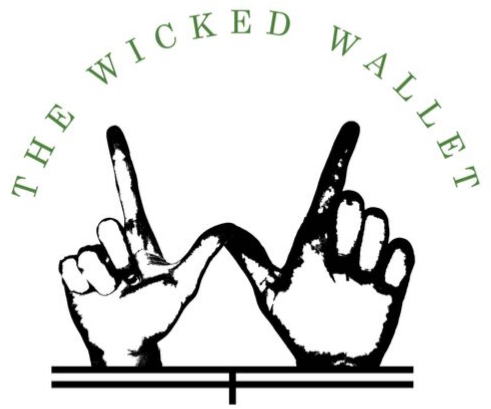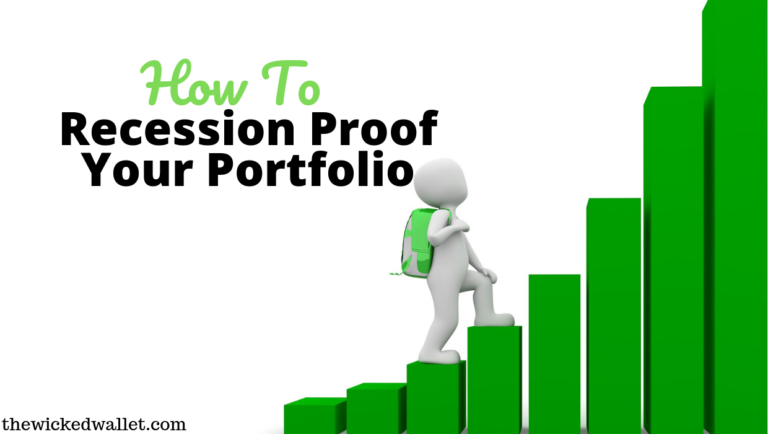Before diving in too far into this article, I want to preface this with… I am not writing this because I think a recession is near. I am of the school of though that you should be thoroughly educated prior to throwing money at anything and that you should always strive towards continuously educating yourself.
That said, not everyone has the time or privilege to be self-educating. That’s fine, that’s why you’re here, reading this article, right? 🙂
What Is A Recession?
A recession is when an economy is in decline for an extended period of time. During this time, industrial and/or trade activity generally is drastically reduced. This affects employment rates, income levels and of course, the stock market.
Bringing it back to my macro economics class, technically a recession is when two consecutive quarters have a negative GDP. However, if you take a step back and look at the economy from a 50,000 ft. level, you’ll see that it is (for the most part) on an uphill curve.
But Why?
Keeping that in mind, there are still these shorter term periods of declines or contractions. These are part of the business cycle and are inevitable. Unfortunately though, there are no set in stone ways to completely predict these economic downturns. Economists who dedicate all of their resources towards forecasting the next recession even say that it is impossible. However, there are some factors that give off some cautionary signals.
The picture below shows the business cycle from Lumen learning (link provided above). It is a great depiction of the highs and lows of the cycle, but remember if you look at it from a high level view you will notice that it is upward trending.
These include Purchasing Managers Index (PMI), Composite Index of Leading Indicators and the OECD Composite Leading Indicator. All of these are watched diligently for any warning signs of a recession. Economists also study all of the individual components that make up GDP to understand whether or not it will be negative. They do this by evaluating data sets published by Government Agencies. Lagging indicators are also on the watch list however these only become visible when the economy is following a pattern, therefore they are not predicting but instead just confirming a trend. An example would be interest rates, these really won’t change unless something major happens in the markets.
Recessions can be as small as a single county or as large as the entire country (or even world!). The last recession technically lasted from December 2007 to June 2009 and is referred to as “The Great Recession” which resulted in a global financial crisis. It was caused mainly by subprime mortgages. Banks would lend money to borrowers with poor credit history, so they were considered high risk borrowers and then they would go and try to sell that mortgage to larger Mortgage brokers (Fannie Mae, Freddie Mac, etc.) however these larger Mortgage companies stopped buying these subprime mortgages. That and plenty of factors resulted in the 2008 Financial Crisis.
Fun fact: depressions are longer lasting recessions (ex: The Great Depression of the 1930’s).
How To Recession Proof Your Assets
With all that said, how the heck do you make sure that you don’t lose all of your money? Well, there is no guarantee that won’t happen even without a recession. Nevertheless, there are some vital things that you should be doing to ensure that you are prepared for the worst case scenario.
#1. Have An Emergency Fund
How many times can Gina and Jake recommend having an emergency fund? The world may never know.
But seriously, this is vital ESPECIALLY in case of a recession. Having at least 3-6 months of liquid capital ready-to-go is necessary. Think worst case scenario; you lose your job, your entire portfolio is bunk and you’re allergic to dogs. It can’t get much worse than that. You can at least try to hedge 2 out of 3 of those atrocities, why not help your future self out and do so.
#2. Diversify Your Investments
If your investment portfolio is made up of multiple assets spread across different allocations rather than just putting all of your capital in one area, you have a greater chance of success. Ensuring that your portfolio has an adequate allocation of fixed income (bonds, notes, TIPs) is essential as well. The rule of them for fixed income is to minus your age from 110. Whatever number you get should be the percent of your portfolio that is allocated to equities and the remaining should go to bonds or other fixed income investments.
#3. Rebalance Your Portfolio
Rebalancing your portfolio means evaluating your investments and understanding if your current position is where you wanted to originally be. Goals can change, however sometimes the weight in one asset class may be completely dominating over the other allocations. This is why rebalancing is beneficial, it gives you a chance to take another look at your goals and see if your portfolio reflects them. If not, you may have to buy or sell in some areas to change around your allocations.
Rebalacing is important because you want to ensure that you are diversified to a level that you are comfortable with and also benefiting from. However, you can’t just diversify your portfolio when you initially invest. You need to keep your eye on it and rebalance when necessary. This isn’t something that needs to be done daily or even monthly. Quarterly or even semi-annually would be fine for most average investors.
#4. Understand Your Expenses
Were those fifth pair of sneakers a need or a want? Understanding your monthly expenses and what is discretionary/non-discretionary within your monthly spend in important. You should understand what expenses you can and can’t live without. This is in case you ever have to cut expenses, you know where to go first.
Also, being frugal comes into play here. The lower your monthly expenses are, the easier time you’ll have if the worst case scenario happens. You’ll need to withdraw less monthly from your emergency fund since you don’t need much to live which will make it last longer and you won’t really see a major shift when all of a sudden you can’t afford these luxuries you once could.
#5. Play The Long Game
Wait it out. Seriously. If a recession hits, try to keep emotions out of it entirely. It’s hard especially when you see large sums of money disappearing from your accounts but it is part of the economic cycle. What goes up must come down… but it will go back up again. Wait it out and you will watch your money return.
Refer to the chart above from Lumen, it shows that if you play the long game, your odds of success are likely to be positive. This is because the economy as a whole outputs positive results even with the periods of decline.
#6. Maintain Your Credit Score
This one isn’t the best option however it is still viable. Try to maintain your credit score as much as possible. This way, if all else fails, you can try work something out with a lender to get your living expenses covered. Whether it is a small consumer loan or a loan against an asset, for some this is the only option.
#7. Avoid Over-Leveraging Yourself
Avoid taking out too much debt. Any debt that you wouldn’t be able to cover with your monthly income is too much and a lender likely wouldn’t allow. Nevertheless, you need to be conscious of your debt and always have plans for how you would pay it off in case of the dreaded worst case scenario. These amounts can be factored into your emergency fund or separated out, but regardless they need to be accounted for.
For example, if you own a rental property, you should have at least 6 months of the total rent (not just total mortgage payment) saved up in an emergency fund specifically for that property.
Final Thoughts
Although we cannot predict the next recession, we can prepare. This doesn’t mean buying your apocalypse backpack and keeping it by the door, these steps are manageable and should be done regardless of an anticipated recession.
Is your portfolio recession proofed? Let me know in the comment section what you’re doing to protect your capital.
If you’re looking for some more great reads, check out these articles!




